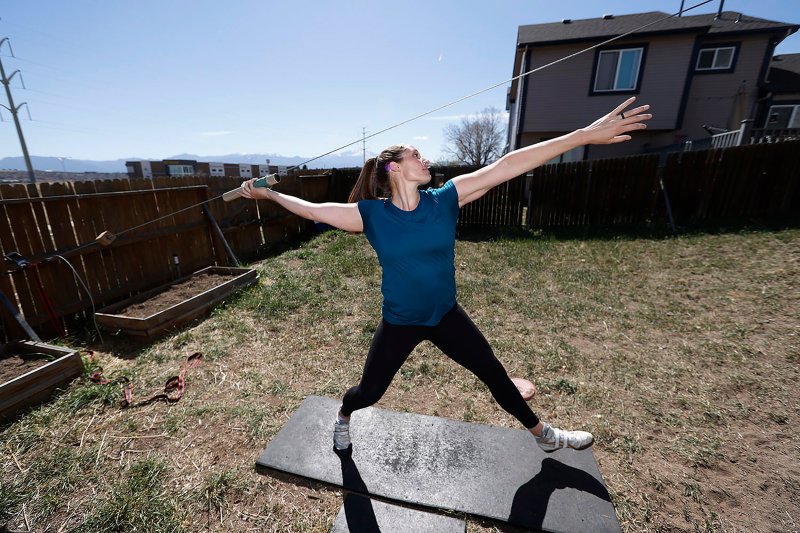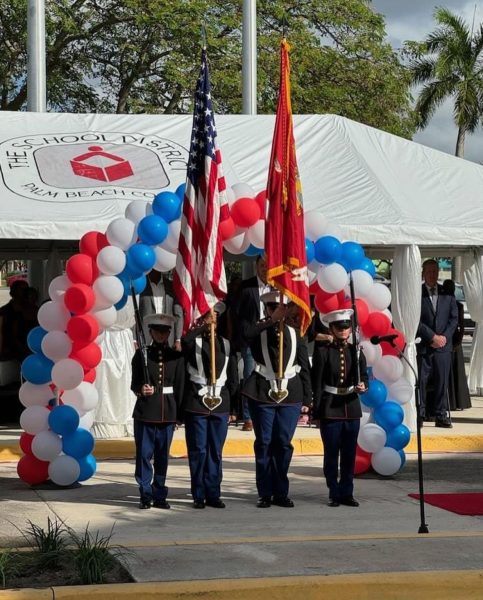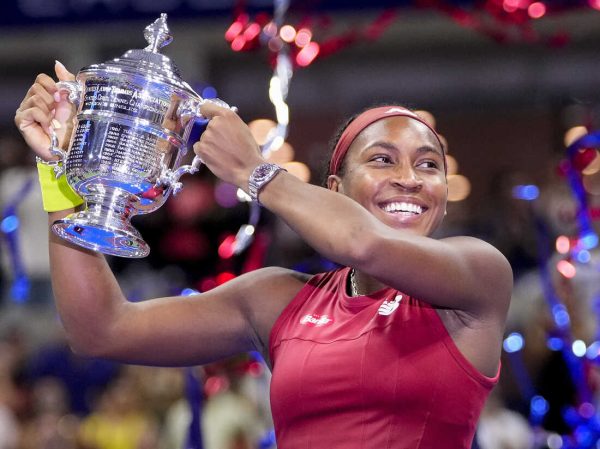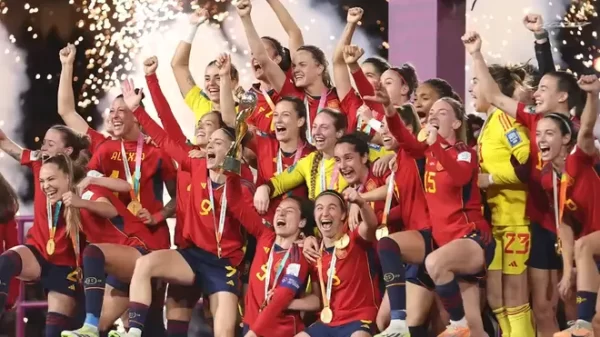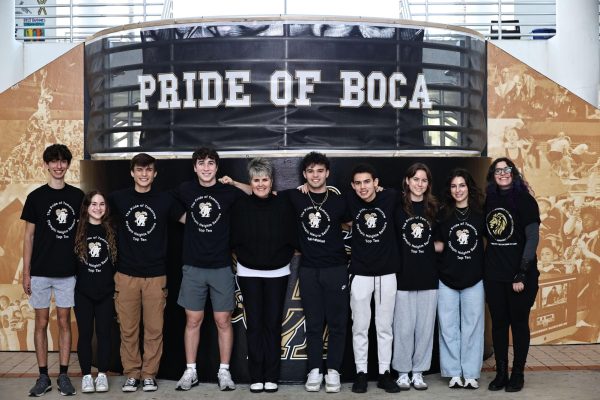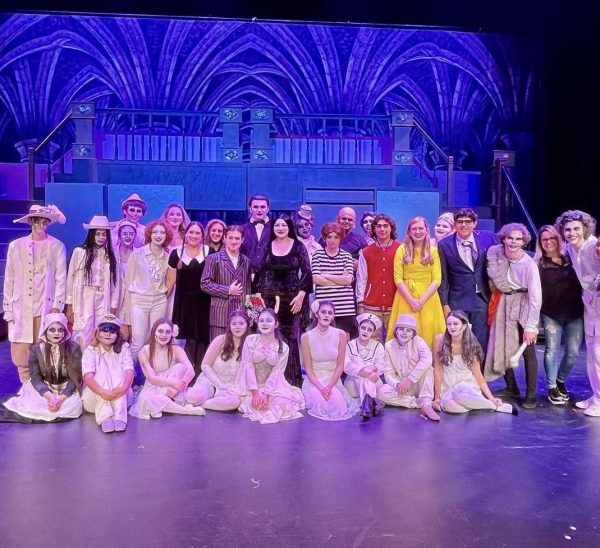Pandemic alters training for Olympic hopeful athletes
Kara Winger, a three-time Olympian and the U.S. national record holder in the javelin, uses a cable system to simulate throwing a javelin as she trains outside her home in Colorado Springs.
Most every athlete has one common goal and that is to have an Olympic gold medal draped around their neck and standing on that podium knowing they did their coaches, teammates, family, and country proud.
After four solid years of training, the best of the best meet in one place to compete and face off against each other to prove that all their hard work and dedication has been worth it. However, just one wobble, one shake, or one wrong step is the difference between first and last place at the Olympic Games.
When 2020 rolled around, new challenges brought on by the COVID-19 pandemic were faced by the Olympic-hopeful athletes, making it harder to train and compete at the highest level. Lock down orders prohibited athletes from training in their normal setting, so staying in shape, keeping focus, and finding ways to deal with all the stress just got harder on these athletes.
Eventually, the 2020 Olympic Games were postponed to 2021, giving athletes hope. However, in order to stay in the game both physically and menatlly, athletes have had to find new and unique ways to train.
Visual training has always been an effective way of training as it helps the body connect with the mind. During lock down restrictions, athletes increased the use of visual training to ensure that their minds would remember past skills and techniques.
Katie Ledecky, five time Olympic gold medalist swimmer states, “I have my goals and I visualize things to help me achieve those goals. I know what my stroke should feel like at different parts of the race, and I can just kind of picture that in my mind.”
Athletes such as Ledecky have found that visualization is one of the most important exercises an athlete can do because it connects the mind to the body. During the pandemic, athletes have found that they need visualization now more than ever as their body isn’t working as hard as it normally would be.
However, accomplishing the mental aspect of training during COVID-19 has been much easier than accomplishing the physical aspect. Facilities and training programs have been shut down all over the world making it hard for athletes to stay in shape.
Olympic hopeful shot-putter Scott Lincoln, used to take 28 flights and travel long distances to get a suitable gym to practice and train for 2020. Since the pandemic put an end to his travels and forced him to stay at home, Lincoln and his coach knew that they had to be creative to keep him in top shape for 2021.
“The British champion has also taken to finding new ways to use his one trip out a day during lockdown such as by pushing a two-ton work truck around a car park outside the warehouse,” reports Aljazeera.
This proves that although the pandemic has made it almost impossible for athletes to stay in shape it isn’t impossible. All it takes is motivation and a little bit of creativity.
2020 was a tough year for everyone and a perfect excuse to give up and lose hope, but most Olympic-hopeful athletes have been hard at work trying to find creative ways to prepare themselves for this summer games.


